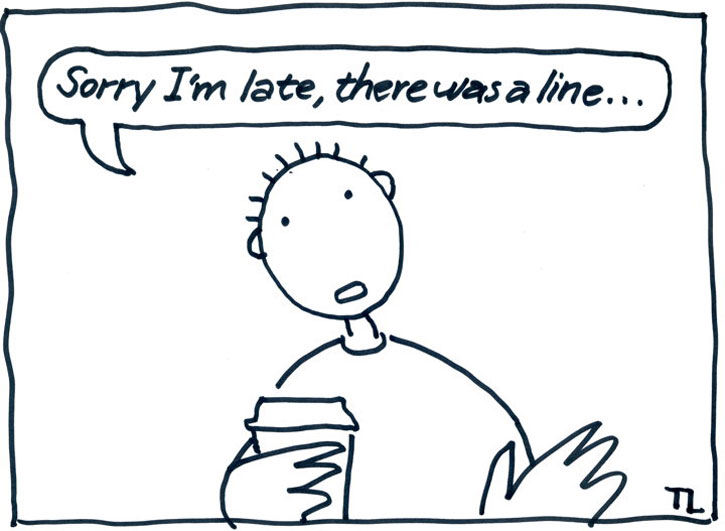Don’t chew gum. Don’t bring your own coffee. Be on time.
Those are easy.
Here’s the hard stuff. Don’t talk too much. Maintain your attention. Be relaxed.
What’s the difference? It’s simple: we really dont need to be told to be on time, sans coffee and gum. But, it’s really hard to be relaxed when you know the interview is a once in a lifetime opportunity.
Here’s another. Why do people come to interviews unprepared? Is it because they think they have it nailed? Maybe sometimes. Or, is it because it is a once in a lifetime opportunity and they are scared to death? So scared that they revert to a “head in the sand” persona to avoid the fear, anxiety and resulting pain as long as possible?
That was my experience and I’m an experienced practitioner of head in the sand behavior. Take my word for it: being self-delusional works great, up to a point. And of course that point is the interview itself. The interview, where you blow the chance of a lifetime because you avoided thinking about it up to the interview itself.
Actually, now that I’ve thought about it a bit, maybe chewing gum, bringing my own coffee and being late are symptoms of the same delusion. As in, I’ll just show them how relaxed and in charge I am by chewing gum, stopping for coffee on the way, and being fashionably late. You know, just chilling a bit. Its cool.
SEE ALSO: Designers, Do You Know What You’re Worth?
What to do about those pesky feelings that take over and can ruin our opportunities?
First, recognize that feeling anxious when something important looms is normal. It happens to everyone and will happen to you. It sure happens to me and I’m a pro, been there done that. But I still get anxious. Just recognizing the anxiety is the first step in dealing with it.
Second, plan. Planning reduces the unknowns that produce anxiety. And the most important unknown for me: will they like me? If I plan what Im going to say, study the situation, understand, to the best of my ability, what they want, then I’ll begin to feel my anxiety slip away.
Third, create a list of questions that are tailored to the opportunity and are based on what you have learned through your planning process. Questions are a comfortable way to keep the interviewer talking about the position, the company, and themselves. Questions give you a chance to learn more about the stated issues and the underlying, often unstated, interests that are the real drivers.
Finally, get some major aerobic exercise and think about the opportunity while doing so. Whatever the situation, exercise is key to clear thinking and being ready for anything with a relaxed demeanor. Thinking random thoughts interspersed with reviewing my plan while on a run always results in improvements in the plan. It often results in, maybe, a bit more research or perhaps a few more conversations with my advisors. The exercise always results in increased feelings of control over myself and of the situation.
I’ve practiced these steps for years. But as I write this I’m remembering situations early in my career where I wasn’t prepared, stuck my head in the sand, and failed miserably. I vowed to never do that again and then did it again and failed again. Eventually I wormed my way out of a destructive, delusional loop and started to have some success. You can too.
Illustration: Ted Leonhardt
